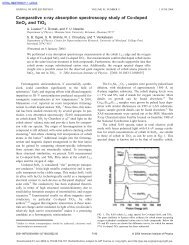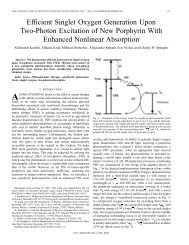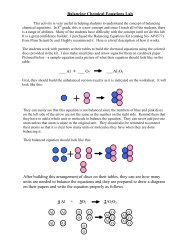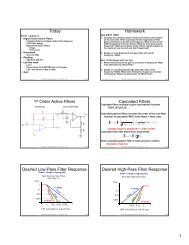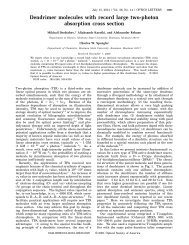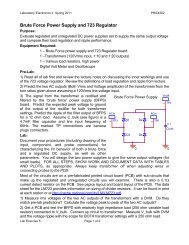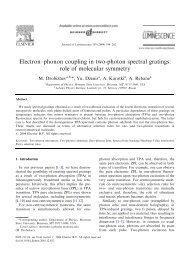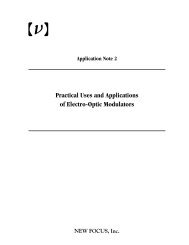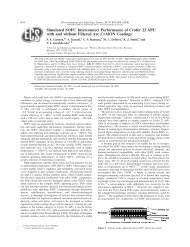Defects in inorganic photorefractive materials and their investigations
Defects in inorganic photorefractive materials and their investigations
Defects in inorganic photorefractive materials and their investigations
You also want an ePaper? Increase the reach of your titles
YUMPU automatically turns print PDFs into web optimized ePapers that Google loves.
<strong>Defects</strong> <strong>in</strong> <strong>in</strong>organic <strong>photorefractive</strong> <strong>materials</strong> <strong>and</strong> <strong>their</strong> <strong>in</strong>vestigations 19<br />
identified. The shapes of the absorption b<strong>and</strong>s are derived from a deconvolution<br />
of the photochromic absorption <strong>in</strong> the plot of Fig. 9c <strong>in</strong>to five Gaussian<br />
b<strong>and</strong>s [106] (Fig. 9d). This is possible for all values of E pump with a maximal<br />
deviation between experiment <strong>and</strong> model of 10 −3 cm −1 .<br />
Fig. 9. a: Schematic representation of the four levels <strong>in</strong> BT:Rh, def<strong>in</strong>ed by the<br />
three charge states of Rh <strong>and</strong> by three ones of the background contam<strong>in</strong>ation Fe.<br />
The chosen energies are not to scale. The levels exchange holes with the valence<br />
b<strong>and</strong> by optical excitation (double arrows), thermal excitation (wavy arrows) <strong>and</strong><br />
recomb<strong>in</strong>ation (s<strong>in</strong>gle arrows). The correspond<strong>in</strong>g rates are <strong>in</strong>dicated beside the arrows.<br />
Here the parameters have the follow<strong>in</strong>g mean<strong>in</strong>gs: S, absorption cross-sections;<br />
q, quantum efficiencies for ionization after absorption; β, thermal transition rates;<br />
γ, recomb<strong>in</strong>ation parameters.<br />
b: Discrim<strong>in</strong>ation between optical level (end of optical excitation <strong>in</strong> sketched configuration<br />
diagram) <strong>and</strong> thermal level, both for the special case of Rh 3+/4+ level. For<br />
simplicity this dist<strong>in</strong>ction is not <strong>in</strong>cluded <strong>in</strong> Fig. 9a.<br />
c: Dependence of the absorption changes (grey scale) <strong>in</strong>duced by pump light (vertical<br />
energy scale). The probe light energy is given as abscissa. Monitor<strong>in</strong>g pump<br />
light-<strong>in</strong>duced EPR changes allows to assign the absorption features to specific defects,<br />
<strong>in</strong>dicated by vertical dashed l<strong>in</strong>es.<br />
d: The deconvolution of the absorption changes <strong>in</strong> c, compared with the defect densities<br />
derived from EPR, leads to the shown absorption cross-sections.





